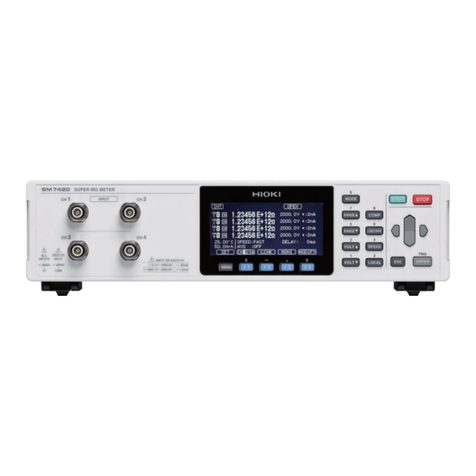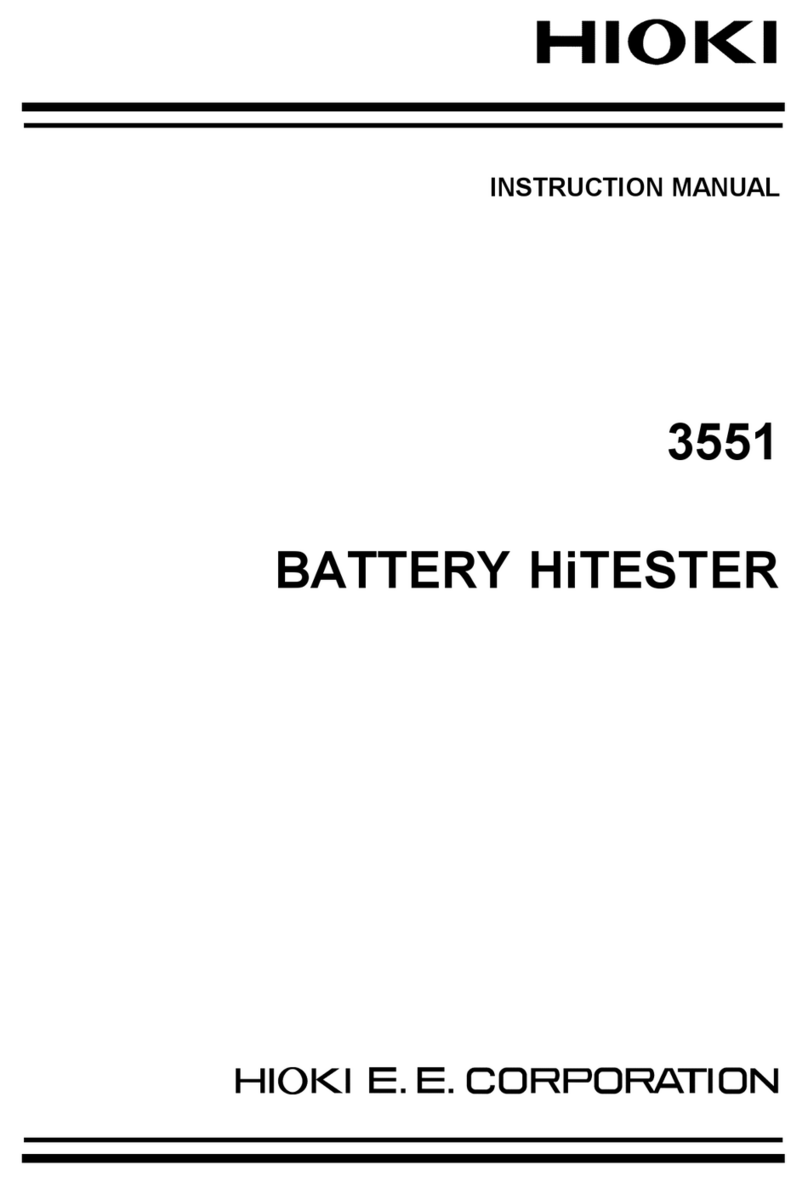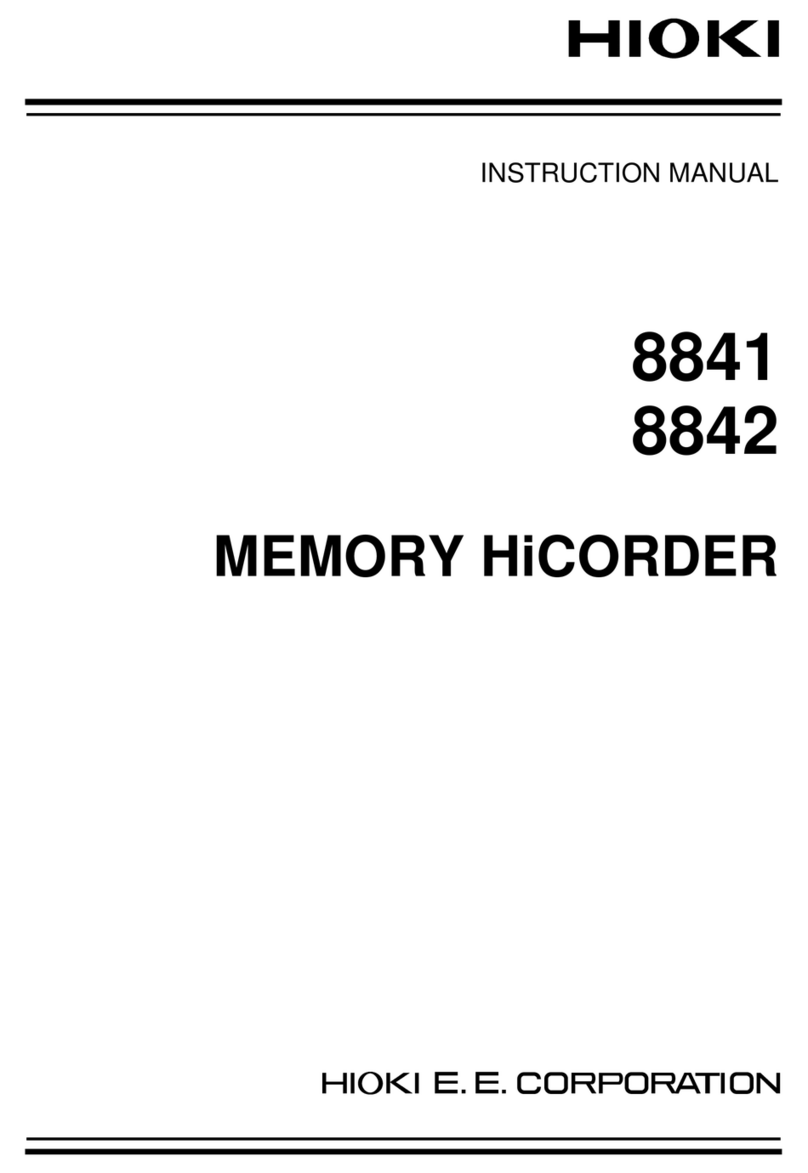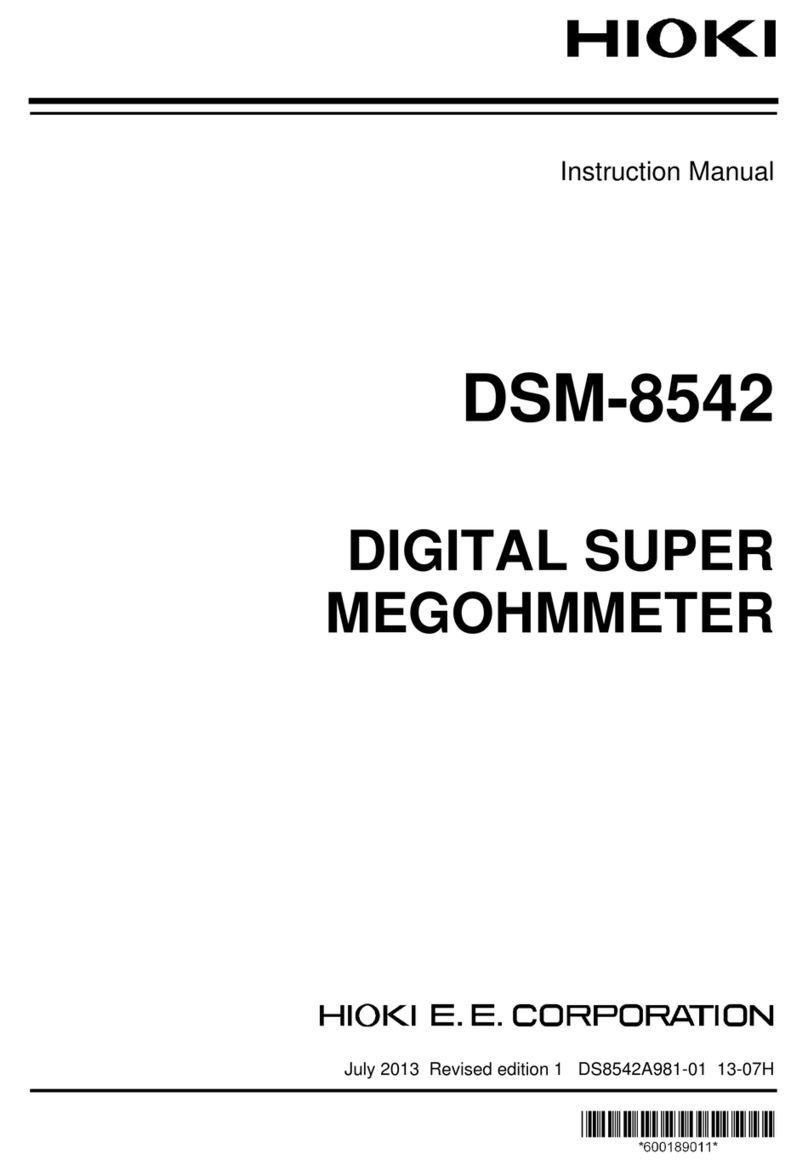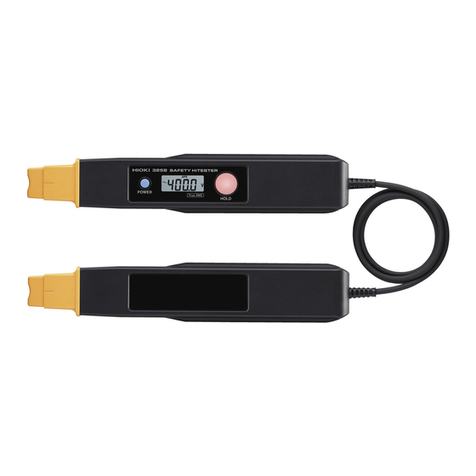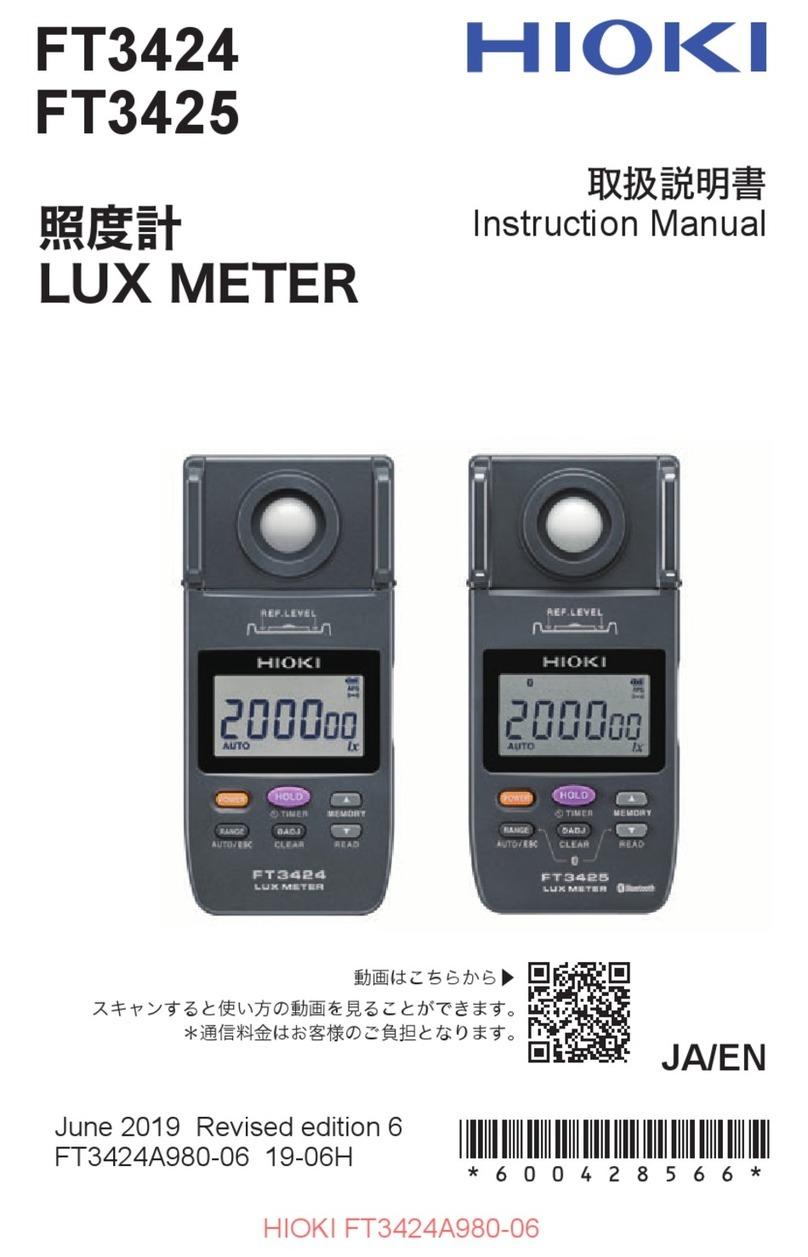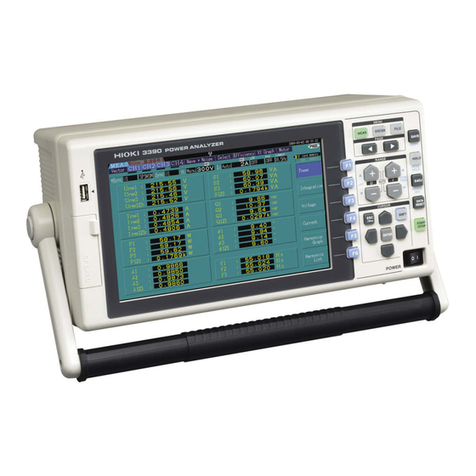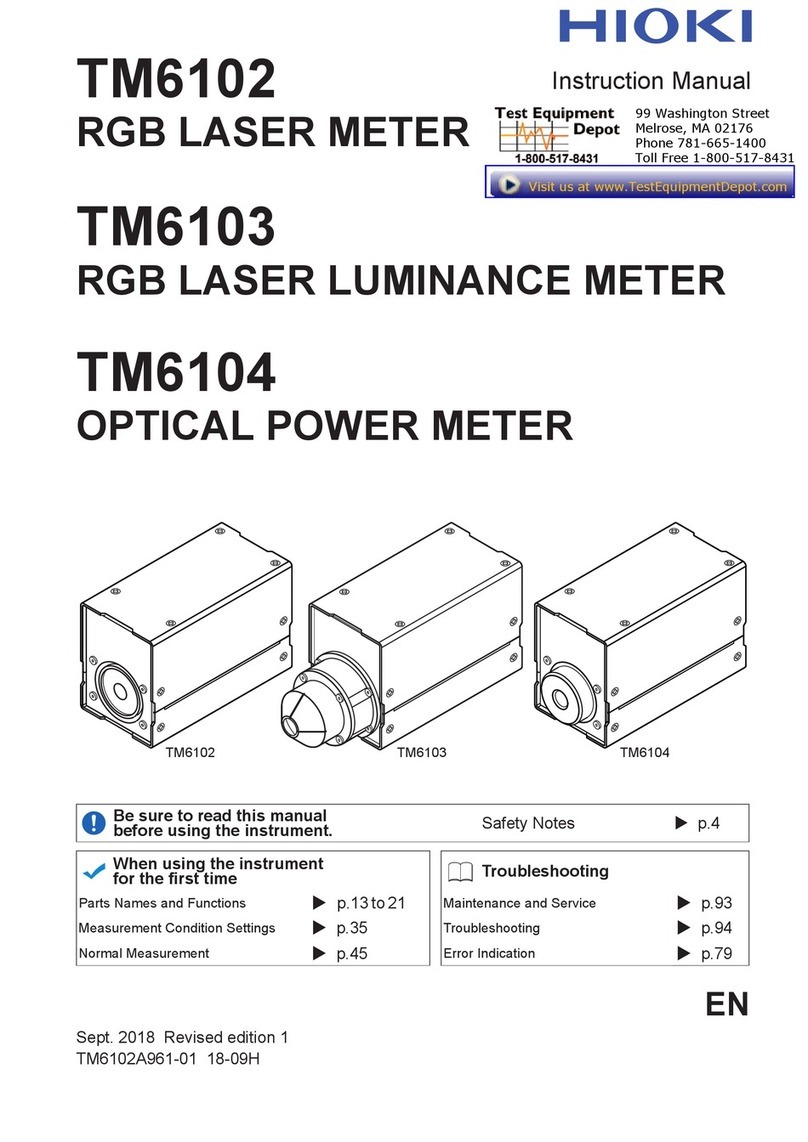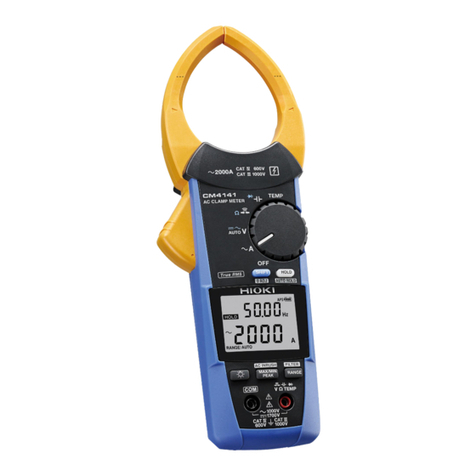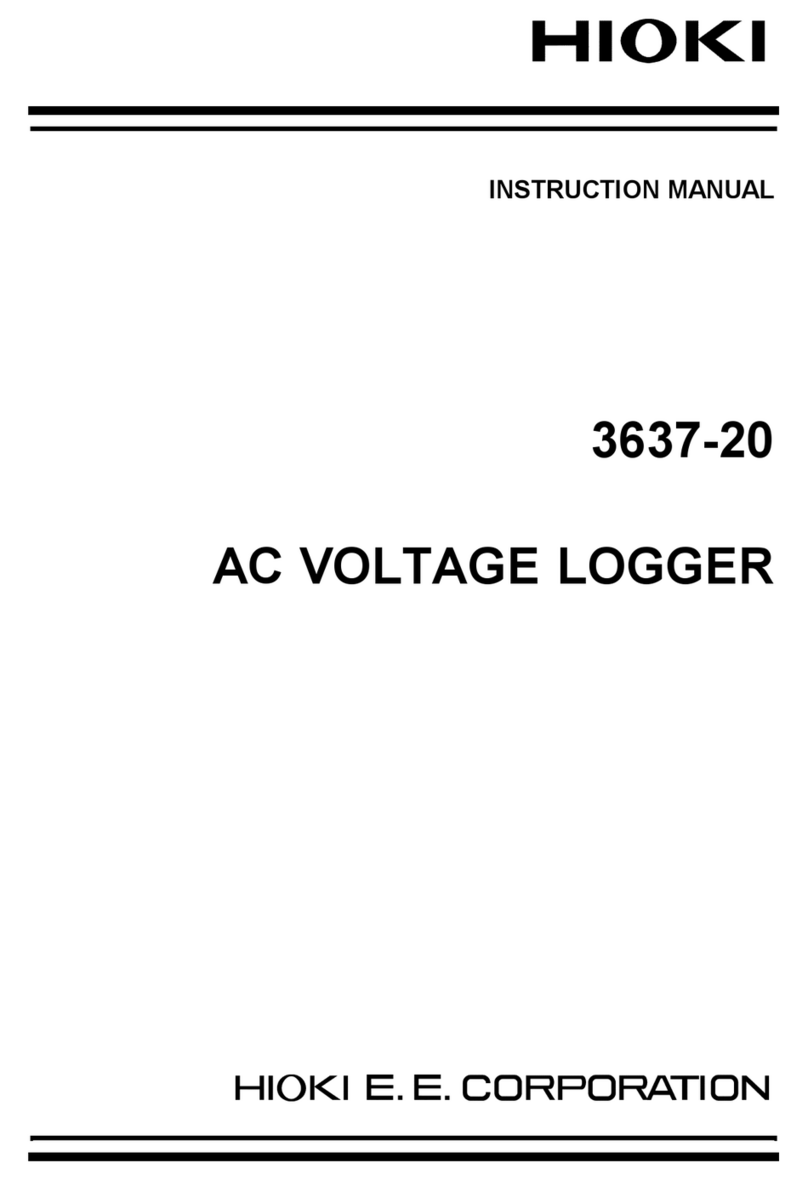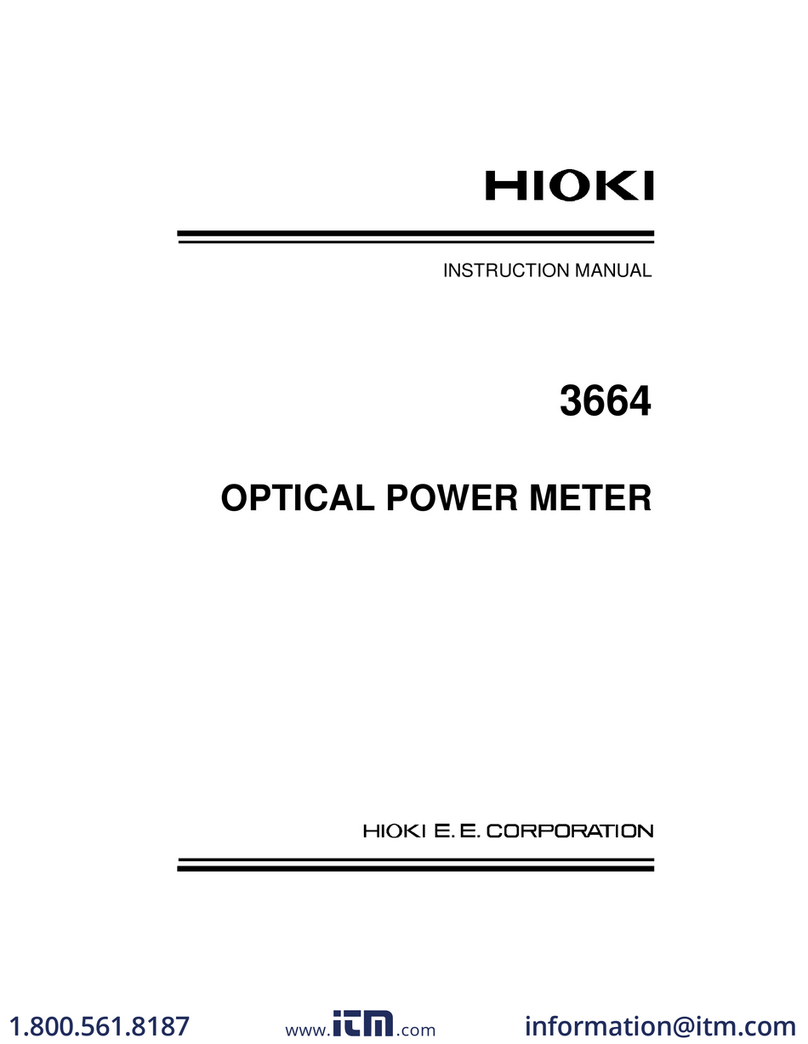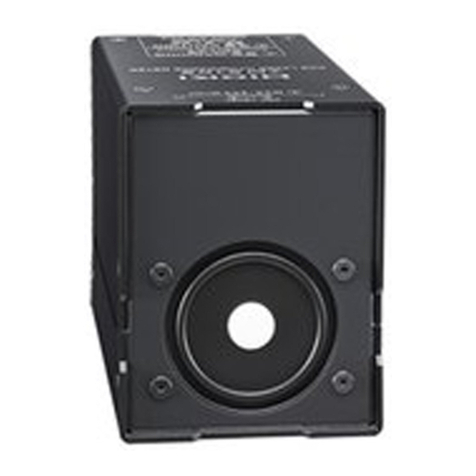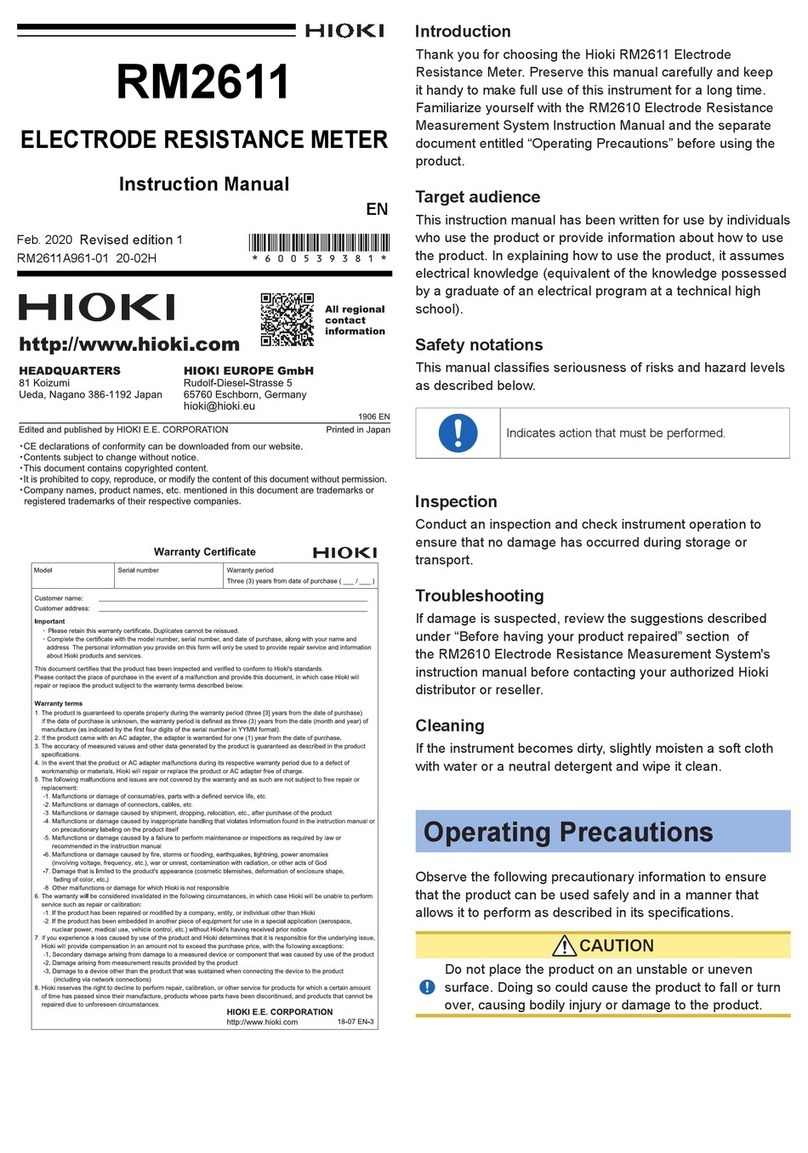PIN TYPE PROBE
Instruction Manual
L2003
EN
November 2014 Edition 1
Printed in Japan
L2003A981-00 14-11H
Inspection/Maintenance
When you receive the productinspect it carefully to ensure
that no damage occurred during shipping. If damage is
evidentor if it fails to operate according to the specifications
contact your authorized Hioki distributor or reseller.
Preliminary checks
WARNING
Before using the productensure that the insulation on
the probes are not damaged and conductors are not
exposed. Using the product in such conditions could
cause an electric shockso contact your authorized
Hioki distributor or reseller for repair.
Maintenance and service
IMPORTANT
Never use cleaning agents containing benzenealcohol
acetoneetherketonesthinners or gasoline. These can
deform and discolor the case.
•To clean the productwipe it gently with a soft cloth moistened with
water or mild detergent.
•If the product seems to be malfunctioningcontact your authorized
Hioki distributor or reseller. Pack the product so that it will not get
damaged during shippingand include a description of existing
damages. Hioki cannot be responsible for damage that occurs
during shipment.
Disposal
Handle and dispose of the product in accordance with local
regulations.
Operating Precautions
Installing the product in inappropriate locations may cause
the probe to malfunction or lead to accidents. Please do not
install in the following locations. For details on the operating
temperature and humiditysee the specifications.
WARNING
• Exposed to direct sunlight or high temperatures
• Exposed to corrosive or combustible gases
• Exposed to strong electromagnetic fields or
electrostatic charges
• Near induction heating systems (such as high-
frequency induction heating systems and IH cooking
equipment)
• Susceptible to vibration
• Exposed to wateroilchemicalsor solvents
• Exposed to high humidity or condensation
• Exposed to high quantities of dust particles
CAUTION
•The ends of the probes are sharp. Be careful to avoid
injury.
•To prevent probe damagedo not step on probes or
pinch them between other objects. Do not bend or pull
on probes at their base.
Safety Information
Before using the productbe certain to carefully read the
following safety notes.
WARNING
•Customers are not allowed to modifydisassemble
or repair the instrument. Failure to observe these
precautions may result in fireelectric shockor injury.
•Ensure that the input does not exceed the maximum
input voltage or current to avoid product damage
resulting from heat building. Excessive voltage and
current can cause the product to malfunction.
CAUTION
• Mishandling could result in malfunction of the probe.
Be certain that you understand the instructions and
precautions in the manual before use.
•If persons unfamiliar with electricity measuring product
are to use the productanother person familiar with
such instruments must supervise operations.
Safety symbols
Indicates cautions and hazards. When the symbol is
printed on the productrefer to a corresponding topic
in the Instruction Manual.
Indicates DC (Direct Current).
Notation
In this manualthe risk seriousness and the hazard levels are
classified as follows.
WARNING
Indicates a potentially hazardous situation that may
result in death or serious injury to the operator.
CAUTION
Indicates a potentially hazardous situation that
may result in minor or moderate injury to the
operator or damage to the product or malfunction.
IMPORTANT
Indicates information related to the operation of
the product or maintenance tasks with which the
operators must be fully familiar.
Indicates a prohibited action.
Indicates actions which must be performed.
Overview
L2003 Pin Type Probe is a four-terminal probe. The probe can be
used to contact various types of batteries since the measuring unit is
pin shaped.
Specifications
Measurable frequency
range
DC to 1050 Hz
Maximum rated voltage 30 V peak
Maximum rated current 2.5 A peak
Structure Four-terminal pair connection structure
Length Approx. 1500 mm (59.06″)
Mass Approx. 200 g (7.1 oz.)
Cable used 50 ΩCoaxial cable
Terminal structure Gold plating process
Tip shape: Needle
Used tip pin can be replaced.
Distance between pins 2.5 mm (0.10″)
Operating temperature
and humidity
Temperature; 0°C to 40°C (32°F to 104°F)
Humidity; 80% RH or less (no condensation)
Storage temperature
and humidity
Temperature; -10°C to 50°C (14°F to 122°F)
Humidity; 80% RH or less (no condensation)
Operating environment IndoorsPollution degree 2altitude up to
2000 m (6562 ft.)
Product warranty
period
1 year
Accessories Return Cable (400 mm)
Return Cable (550 mm)
Return Cable (800 mm)
Instruction Manual
Option 9772-90 Tip Pin
Part Names
Tip pin
Red (HIGH)
Black (LOW)
Return
Cable
(550 mm)
Mounting holes
